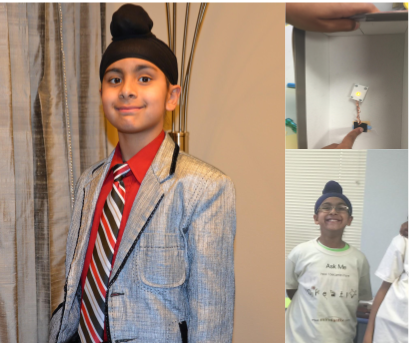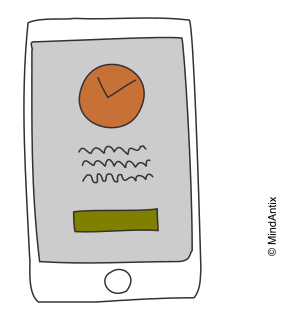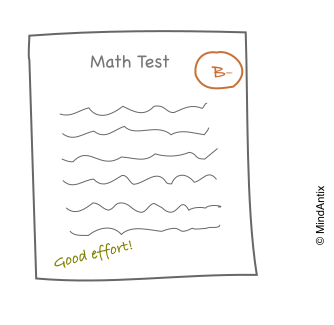Our inventor this week is Neha Krishnakumar, whose team invented the multi-functional scissors in one of our earlier camps. The team’s invention won a national level award as part of the “Student Ideas for a Better America” competition organized by the National Museum of Education.
Here is what Neha had to say about her invention.
Can you tell us a little bit about yourself?
My name is Neha Krishnakumar and I am a 7th grader in Evergreen Middle School in Redmond, Washington. I like solving logic puzzles and finding creative solutions to problems. I also like taking creative photographs and playing the violin.
What is your invention and how does it work?
My team’s invention idea was called “Switch-it Scissors”. This idea solves the problem of having to switch between different kinds of scissors and tools while working on a project.
The way it works is you get different types blades such as knife blades, zigzag blades for edges, serrated blades and regular cutting blades that can be detached from the handle. So the user can change the blades based on their need while working on their project. We also provide two different handle sizes for both kids and adults.
How did you come up with the idea?
The challenge that we were given was to find a creative way to make school supplies better. We chose scissors because we thought that it could have more improvement than any other supplies. While working on projects we switch between different types of scissors and it makes the whole process more tedious. Our solution will improve efficiency and make things more convenient for the user.
Did your prototype work? How was that experience?
We chose to use cardboard and duct tape to make our prototype. We made the different types of blades and handles by cutting the cardboard out in different shapes and sizes. Even though the prototype does not physically work, it clearly demonstrates how the end product will look and feel.
We learned a lot from the experience of building this prototype. It taught us how to collaborate as a team, share multiple ideas and have fun while building it.
What did you learn from the summer camp?
MindAntix taught me multiple creative thinking techniques during the summer camp. I used these techniques that were taught to come up with the prototype ideas. Two strategies that stood out for me are “Don’t refuse any ideas even if you don’t think they are good” and “Always think out of the box”.
What is your most fun memory from the camp?
I enjoy problem solving and this camp gave me an opportunity to work on that. My favorite part was when all of us presented all our prototypes to the parents and other audience who were invited on the last day of the camp.
What kind of problems do you want to solve when you grow up?
I like to focus on solutions for making tasks easier than they are. It does not matter if these tasks are trivial or complex. No problems in this world should be ignored as we can always make our lives easier with better solutions.
What will you be using your prize money for?
This prize money is my first income in life. I really cherish it and I decided to add this prize money to my savings account and will use it later.
Congratulations Neha for a well deserved award! We wish you the best in your journey towards solving more problems.





